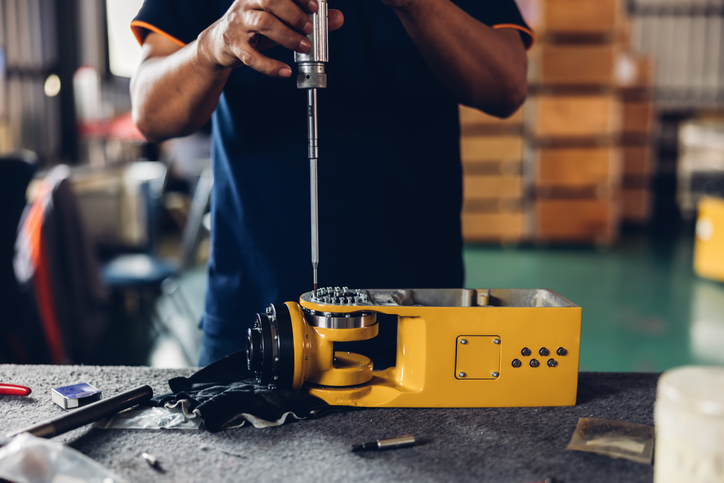Assembling at Scale? Don’t Let Small Issues Become Big Problems
In OEM assembly for high-volume production, even the smallest issues can ripple across thousands of units. Inconsistent welds, late parts, or shifts in tolerances can cost you time and money. However, staying abreast of potential issues can be challenging, especially when other priorities compete for your attention. That’s why we created this guide. Below, we’ll break down the biggest challenges OEMs face with assembly — and give you tips to overcome them.
Challenges of High-Volume OEM Assembly
Maintaining Consistent Quality at Scale
As production volume increases, so does the potential for variation. As noted above, even minor inconsistencies can lead to significant issues. And when scaled across hundreds or thousands of units, the costs to fix these issues become large. Not to mention, defective products lead to returns, warranty claims, and bad reviews. Once an OEM’s reputation is damaged, it can be hard to recover.
Achieving Cost-Efficiency
OEMs operate in margin-sensitive markets; their customers demand cost-effective solutions to stay competitive themselves. Because of this, OEMs are under constant pressure to reduce costs without compromising quality. That means they must continually find ways to streamline operations and optimize production.
Ensuring Traceability and Regulatory Compliance
Traceability and regulatory compliance are crucial to an OEM’s success. However, high-volume, complex assembly processes often involve numerous parts, suppliers, and production steps. Without an integrated system in place, it’s easy for data to become siloed, lost, or inconsistent. As a result, it can be difficult to trace the origin of a component or prove compliance during audits.
If an OEM fails to maintain proper traceability, it can risk non-compliance penalties. Additionally, this can make it harder to manage recalls, warranty claims, or customer inquiries. As a result, the OEM could open itself up to legal and financial liability.
Labor and Workforce Challenges
Finding skilled labor for high-volume OEM assembly is becoming increasingly difficult. In fact, a recent Deloitte study found that 1.9 million manufacturing jobs could be left unfilled by 2033. This labor gap, along with high turnover and potential training discrepancies, can impact both product quality and throughput.
Balancing Customization with Standardization
OEMs often have to accommodate high-mix, low-volume orders while still maintaining the efficiencies of high-volume production. Without flexible, adaptable processes, OEM assembly for high-volume production can quickly become unwieldy.
How to Solve Your OEM Assembly Challenges
Advanced Quality Assurance and Testing
OEMs must partner with a company that’s dedicated to quality assurance. This includes regular inspections, testing, and continuous improvement initiatives. Additionally, look for an assembly partner that has ISO-certified quality systems. With those in place, you can be ready for OEM audit requirements.
Cost-Saving Strategies
There are a few strategies OEMs use to lower costs for assembly. Successful OEMs consistently work with an experienced manufacturer to optimize your design for manufacturability. This can simplify assemblies and reduce materials use. The right contract manufacturer will be able to help you improve your operations to cut down on costs.
Vertically Integrated Services
Working with a vertically integrated manufacturer consolidates multiple stages of production under one roof. This reduces reliance on multiple suppliers, shortens lead times, and simplifies coordination. Overall, a vertically integrated manufacturer can improve responsiveness and maintain tighter control over quality and scheduling.
Traceability and Regulatory Compliance Enhancement
A manufacturer with established traceability and regulatory processes can take stress off your plate. They ensure every part and process in the assembly line can be tracked and documented. This helps you comply with industry regulations and strengthen product accountability. Enhanced traceability also helps streamline warranty claims and post-sale support by making it easier to trace the origin of specific components or assemblies.
Workforce and Production Flexibility
OEMs need adaptable teams and efficient systems. Work with a manufacturer that has cross-trained employees. They can shift between tasks as needed, minimizing downtime. Paired with clear, well-maintained documentation, this flexibility allows for consistency even when scaling up or adjusting for custom orders. Additionally, a manufacturer with efficient work cells supports throughput by reducing rework, streamlining processes, and enabling faster turnaround times.
Work with WEBCO for Your Fabrication Needs
Quality components start with WEBCO. With over 40 years of experience, an ISO 9001:2015 certification, and vertically integrated services, we’re ready to take on the most challenging projects. No matter your industry, we’re there to help you every step of the way.
When you partner with us, you can expect an unwavering commitment to quality and customer success. As an employee-owned company, every member of our team takes pride in producing quality components. With state-of-the-art machinery and the most experienced team, we’re equipped to handle projects of any size or complexity.
Get a Quote Today
Ready to streamline your OEM assembly? Let’s talk about how WEBCO can improve your lead times, reduce cost, and protect your brand. Get a quote today and see what our vertically integrated approach can do for you.
